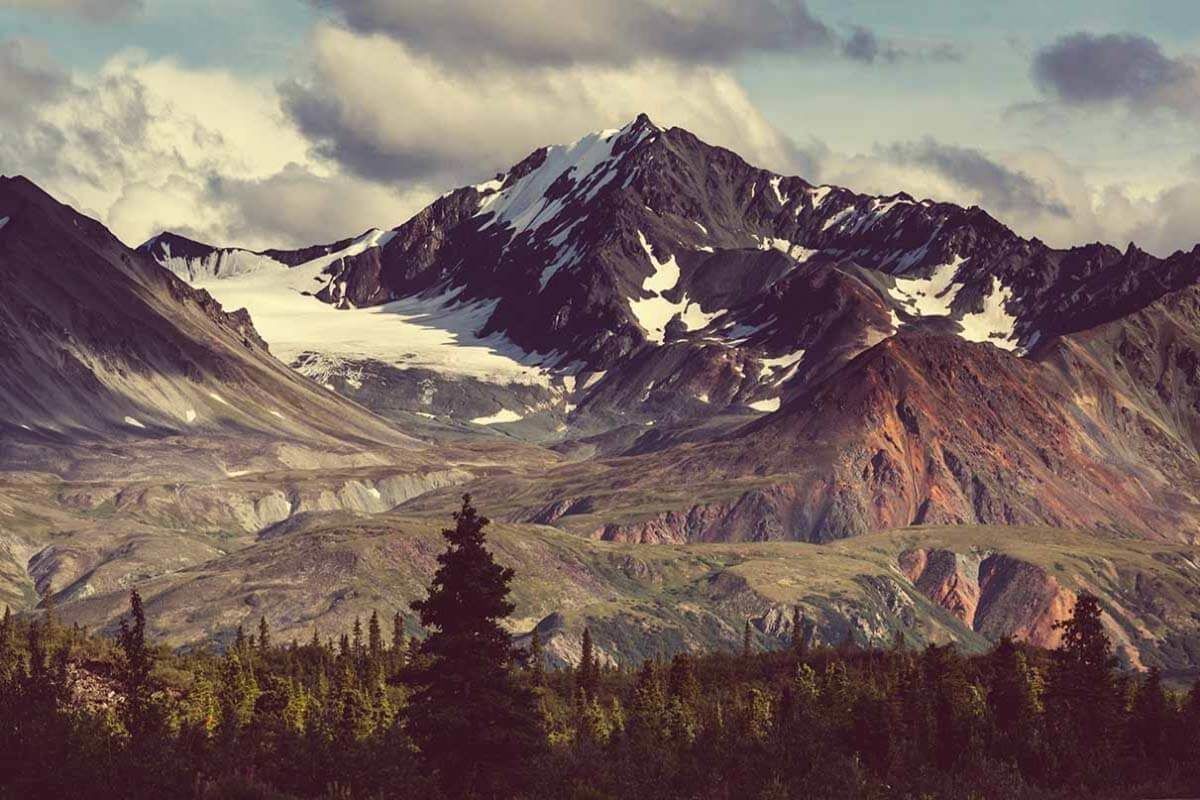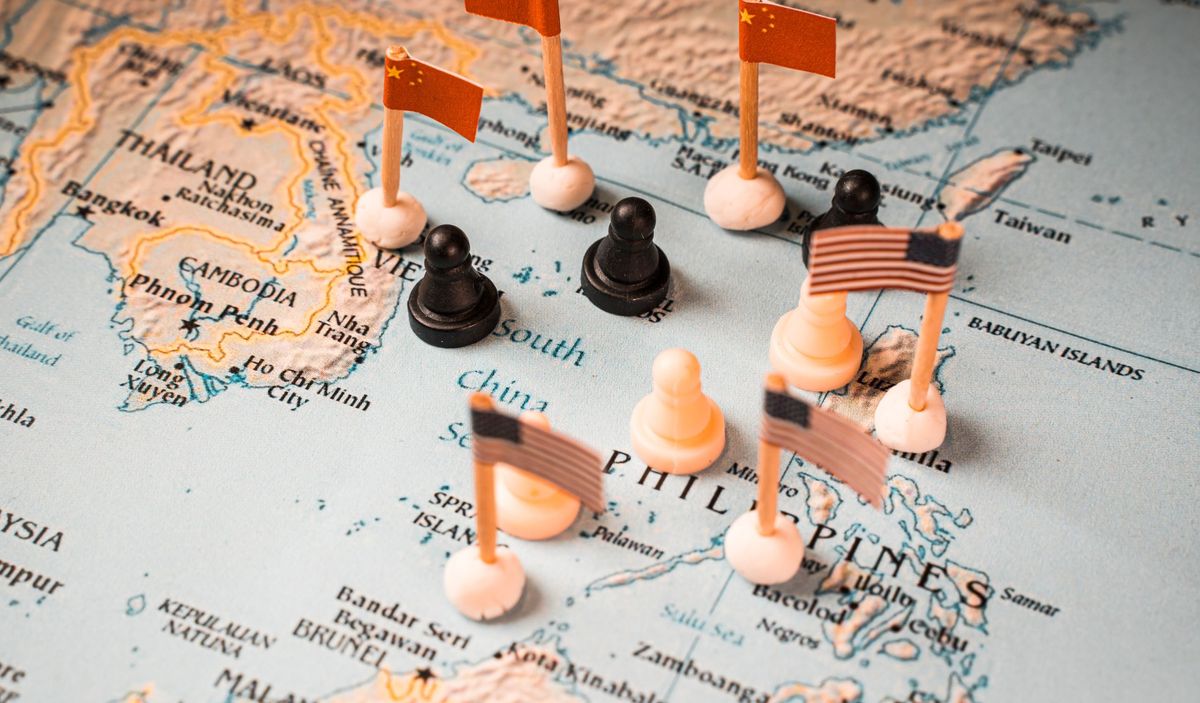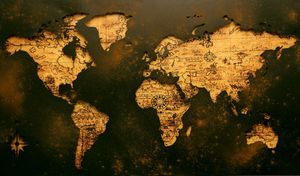Geography is more than just maps and place names; it's a multidisciplinary field that helps us make sense of our world. In this article, we'll explore the vast realm of geography and delve into what it encompasses, why it's vital, and how it impacts our daily lives. Whether you're a geography enthusiast or someone curious about the world, this article will provide you with a comprehensive overview.
What is Geography?
At its core, geography is the study of the Earth's features, the processes that shape them, and the interrelationships between people and their environments. It's a discipline that bridges the gap between the physical and social sciences.
Geography can be broadly categorized into two main branches:
1. Physical Geography

Physical geography focuses on the natural aspects of the Earth. It examines the landforms, climate, ecosystems, and natural resources that make up our planet.
Key areas of study in physical geography include:
- Geomorphology: The study of landforms and how they are created, such as mountains, valleys, and coastlines.
- Climatology: The analysis of climate patterns, weather systems, and the impact of climate change.
- Biogeography: The exploration of the distribution of ecosystems, species, and biodiversity across the Earth.
- Hydrology: The study of water resources, including rivers, lakes, and groundwater.
- Pedology: The examination of soil properties and composition.
2. Human Geography

Human geography, on the other hand, is concerned with the interactions between people and their environments. It delves into the cultural, economic, social, and political aspects of human existence and their geographical implications.
Key areas of study in human geography include:
- Cultural Geography: The investigation of language, religion, customs, and the diffusion of cultures.
- Economic Geography: The analysis of trade, industry, agriculture, and urbanization.
- Social Geography: The examination of human societies, their demographics, and social dynamics.
- Political Geography: The exploration of borders, geopolitics, and the influence of geography on politics.
The Importance of Geography
Geography plays a pivotal role in our lives, often in ways we may not immediately realize.
Here are some compelling reasons why geography is crucial:
1. Understanding the World
Geography provides us with the tools to comprehend the Earth's physical features and the distribution of human populations. This understanding is fundamental to making informed decisions on everything from urban planning to disaster preparedness.
2. Environmental Stewardship
Through physical geography, we can grasp the Earth's ecosystems and the impact of human activities on the environment. This knowledge is indispensable in the fight against climate change, habitat destruction, and pollution.
3. Cultural Appreciation
Human geography helps us appreciate the rich tapestry of cultures and societies around the world. It promotes tolerance, diversity, and an awareness of global issues, fostering a more interconnected world.
4. Economic Insights
Economic geography is essential for businesses and governments to make strategic decisions. It helps analyze markets, trade routes, and resource distribution, ultimately influencing economic prosperity.
5. Political Awareness
Political geography shapes the world's borders, sovereignty, and international relations. An understanding of this field is crucial for diplomacy, conflict resolution, and global governance.
Geography in Everyday Life
Geography isn't just for scholars and map enthusiasts; it's intertwined with our daily routines.
Here are some everyday examples of geography's impact:
GPS systems in our cars and on our smartphones rely on geographic information systems (GIS) to provide directions and locate points of interest.
Meteorologists use geographic data to predict weather patterns and warn of natural disasters like hurricanes and wildfires.
Understanding where our food comes from, thanks to agriculture and trade, is a geographical consideration when making food choices.
From choosing vacation destinations to exploring new places, geography informs our travel decisions.
Cities are designed with geography in mind, considering factors like climate, terrain, and proximity to resources.
The Role of Technology in Geography
Technology has revolutionized the field of geography, enabling researchers, professionals, and enthusiasts to gather, analyze, and present data in ways that were once unimaginable. These technological advancements have greatly expanded the scope of geography and its applications.
Here's a closer look at the pivotal role of technology in geography:
- Geographic Information Systems (GIS):
GIS is a foundational technology in modern geography. It is a computer-based system that allows for the capture, storage, analysis, and visualization of geographic data. GIS technology provides a powerful platform for mapping, spatial analysis, and decision-making across various fields, including urban planning, environmental management, and public health. - Remote Sensing:
Remote sensing technologies, such as satellites, drones, and aerial photography, have transformed the way we collect data about the Earth's surface. Satellites orbiting the planet capture high-resolution images and data that help monitor changes in land use, climate, and natural disasters. Drones, with their ability to access remote or hazardous locations, have opened up new possibilities in data collection, especially in environmental research and disaster management. - Global Positioning Systems (GPS):
GPS technology has become an integral part of everyday life, enabling precise location determination using a network of satellites. GPS is invaluable in navigation, surveying, and various applications of geography. It plays a crucial role in ensuring accurate map data and helping individuals find their way in unfamiliar locations. - Digital Mapping and Cartography:
The digital age has transformed mapmaking and cartography. Geographic data can be easily integrated into digital maps, allowing for dynamic, interactive, and customizable representations of geographic information. Online mapping platforms like Google Maps and interactive GIS applications have made geographical data accessible to a global audience. - Big Data and Spatial Analysis:
Advances in computing power have allowed geographers to analyze vast datasets and model complex spatial phenomena. Big data analytics, machine learning, and artificial intelligence are applied to geographic datasets to uncover patterns, trends, and correlations in fields like transportation planning, urban growth, and environmental modeling. - Crowdsourced Data:
Technology has empowered citizens to contribute to geographic data through crowdsourcing. Platforms like OpenStreetMap and various citizen science projects enable individuals to add information about local geography, wildlife, and other environmental factors, enhancing the accuracy and detail of geographic data. - Real-Time Data: The ability to collect real-time data through sensors, mobile apps, and monitoring systems has enhanced our capacity to track dynamic phenomena like traffic patterns, weather conditions, and environmental changes. Real-time data is essential for emergency response, transportation planning, and environmental monitoring.
- Visualization Tools:
Technology has brought about innovative visualization tools that allow geographers to communicate their findings effectively. From 3D mapping to virtual reality and augmented reality applications, these tools offer immersive ways to explore and understand geographic data. - Geospatial Decision Support Systems:
These systems integrate various spatial data sources to aid decision-makers in solving complex problems. They are particularly valuable in areas like natural resource management, disaster response, and urban planning. - Environmental Monitoring and Conservation:
Technology, including remote sensing and sensor networks, plays a crucial role in monitoring environmental changes, such as deforestation, climate patterns, and wildlife habitats. This information is vital for conservation efforts and understanding the impact of climate change.
Challenges and Controversies in Geography
While geography is a powerful tool for understanding our world, it also faces some challenges and controversies. These include issues related to geopolitical conflicts, territorial disputes, and debates over map projections. Additionally, the field must adapt to the ever-evolving nature of the Earth's climate and ecosystems, requiring constant updates and research.
Conclusion
Geography is not just about maps; it's about our relationship with the Earth and each other. It helps us comprehend the world, make informed decisions, and navigate our daily lives. By appreciating the diverse aspects of physical and human geography, we can foster a deeper connection to the planet and promote responsible stewardship for the benefit of future generations. So, whether you're a geography aficionado or a newcomer to the subject, take a moment to explore the world through the lens of geography, and you'll discover a richer, more interconnected planet.

Here are some frequently asked questions (FAQs) related to Geography
What is the main purpose of geography?
Geography's primary purpose is to understand the Earth's physical features, human populations, and the interactions between them. It helps us make sense of the world we live in.
How is geography divided into different branches?
Geography is broadly categorized into two main branches: physical geography, which focuses on natural aspects, and human geography, which explores the relationships between people and their environments.
Why is geography important in our daily lives?
Geography is vital because it helps us make informed decisions, understand the environment, appreciate diverse cultures, and analyze economic, political, and social aspects that shape the world.
How does geography impact the environment?
Geography plays a significant role in environmental stewardship by helping us study ecosystems, monitor climate change, and address environmental challenges like pollution and habitat loss.
What are some everyday examples of geography in action?
Geography influences everyday life through navigation, weather forecasts, food choices, travel planning, housing and urban development, and more.



